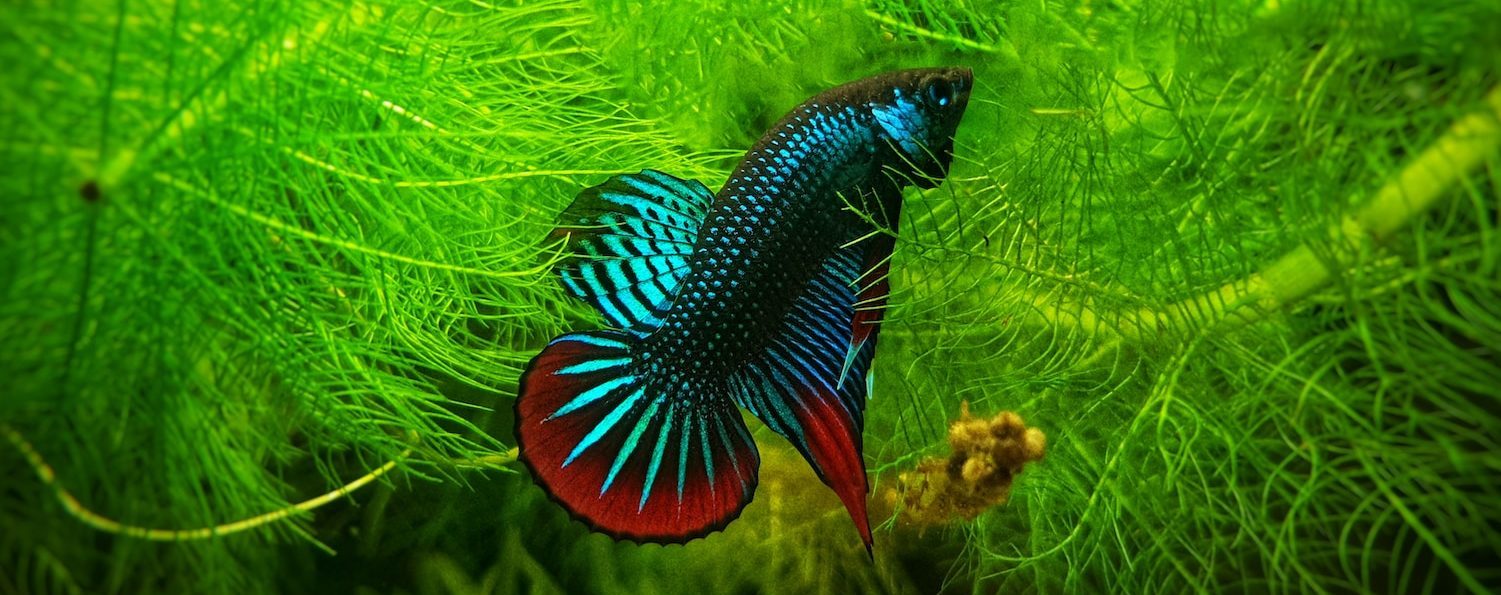Disclosure: Please note that some of the links on this site are affiliate links. If you click on these links and make a purchase, we may earn a small commission at no extra cost to you. Your support is greatly appreciated and helps us continue to provide valuable content. Thank you! (full disclosure)
How to Clean a Betta Tank: Maintaining a Healthy Environment
Betta fish, with their flamboyant colors and charismatic personalities, have captured the hearts of aquarists worldwide. However, along with their beauty comes a responsibility—the duty to create a habitat where they can thrive. A clean tank is not just a glass box filled with water; it’s a sanctuary for your betta, where the quality of life is determined by the quality of the environment. Here, you will learn how to clean a betta fish tank.
Before the step-by-step cleaning of your betta fish tank, it’s essential to acknowledge the sensitivities of these remarkable creatures. Bettas are not your average fish; they possess unique traits and sensitivities that every keeper should be aware of.
- The Labyrinth Organ: One of the most distinctive features of betta fish is their labyrinth organ. Unlike many other fish species, bettas have the ability to breathe oxygen from the air, allowing them to survive in oxygen-deprived waters. While this adaptation is fascinating, it also makes them susceptible to airborne toxins. When cleaning the tank or introducing new items, be cautious not to introduce harmful fumes or substances into their environment.
- Stress Sensitivity: Betta fish are highly perceptive and can become stressed by sudden changes in their surroundings. When handling them or performing maintenance, do so with a gentle touch and minimal disturbance. Gradual changes are often better tolerated than abrupt ones.
- Water Temperature: Maintaining a stable water temperature is crucial. Bettas are tropical fish, and they thrive in water between 78-80°F (25-27°C). Sudden temperature fluctuations can shock and stress them. Always ensure that the replacement water matches the tank’s temperature.
- Social Compatibility: While bettas are known for their solitary nature, it’s important to consider tank mates carefully if you plan to house more than one betta or other fish species with them. Males, in particular, can be aggressive towards each other. Be mindful of their compatibility and provide ample hiding spots if needed.
- Plant Preferences: Bettas enjoy aquatic plants as they provide shelter and resting spots. However, they may nibble on delicate plant varieties. Choose robust, leafy plants like Java fern or Anubias to create a harmonious underwater landscape.
By understanding these unique aspects of betta fish, you’ll be better equipped to provide them with the care they deserve. This guide will take you through the steps of cleaning a betta fish tank, allowing you to strike a balance between maintaining their habitat and preserving their tranquility.
By following these instructions and understanding the importance of regular maintenance, you can ensure that your betta fish thrives in its aquatic habitat.
How To Clean A Betta Fish Tank: Step by Step
Step 1: Gather Your Supplies
Before diving into the cleaning process, it’s essential to gather all the necessary supplies. Here’s what you’ll need:
- A clean bucket or container dedicated for aquarium use.
- A siphon or gravel vacuum.
- An algae scraper or sponge.
- A clean, soft cloth or sponge.
- Dechlorinated water (tap water that has been treated to remove chlorine).
- A water conditioner.
- Optional: a pH test kit and a thermometer.
Having these items ready will make the cleaning process smoother and more efficient.
Step 2: Preparing Your Betta
Your betta fish may find the cleaning process stressful, so it’s essential to prepare them properly. Follow these steps:
- Unplug any electrical equipment: Any heaters or filters should be turned off and unplugged.
- Prepare a Temporary Container: Set up a separate container with some tank water. This container should be large enough to provide ample swimming space for your betta and should include a hiding spot, such as a PVC pipe or a plastic plant.
- Catch Your Betta Gently: Use a soft net to gently catch your betta fish. Approach them slowly and avoid chasing them around the tank. Be patient and take your time.
- Transfer to Temporary Container: Carefully transfer your betta to the prepared temporary container. Ensure that the water temperature in the container matches the temperature of the tank to minimize temperature shock.
- Proceed with Tank Cleaning: With your betta safely in their temporary home, you can now proceed with cleaning the tank thoroughly.
- Monitor Your Betta: Keep an eye on your betta during the cleaning process. Observe their behavior and ensure they remain comfortable in their temporary container.
By isolating your betta during the cleaning process, you reduce the chances of injuring or stressing them.
Step 3: Cleaning the Substrate
The substrate, which can be gravel or sand, can accumulate debris over time. Cleaning it is crucial to maintain water quality. Here’s how to do it:
- Use the siphon or gravel vacuum to remove debris from the substrate. Start in one corner and work your way around, being careful not to disturb the substrate too much.
Cleaning the substrate ensures that uneaten food and waste do not accumulate, preventing ammonia spikes and water quality issues.
Step 4: Cleaning the Tank Glass
The inside glass of your tank can develop algae and mineral deposits, which can obscure your view and affect the overall aesthetics of the tank. Here’s how to clean it:
- Use an algae scraper or sponge to gently clean the inside glass of the tank. Remove any algae or mineral deposits that have accumulated.
A clean tank glass not only looks better but also allows you to observe your betta fish more clearly.
Step 5: Partial Water Change
Regular water changes are essential to remove pollutants and maintain water quality. Follow these steps:
- Empty a portion of the water from the tank into the bucket, typically around 20-30% for regular maintenance. If you have live plants, you may want to replace less water, about 10-15%.
By removing a portion of the water, you eliminate some of the dissolved pollutants and help restore water quality.
Step 6: Cleaning Decorations and Rocks
Decorations and rocks in your betta’s tank can accumulate algae and debris. Here’s how to clean them:
- Gently scrub any decorations or rocks that show signs of algae or dirt buildup.
Clean decorations and rocks not only enhance the tank’s appearance but also contribute to better water quality.
Step 7: Refilling the Tank
After removing a portion of the water and cleaning the tank components, it’s time to refill the tank. Follow these steps:
- Refill the tank with dechlorinated water that’s roughly the same temperature as the tank water. Use a thermometer to check the temperature if necessary.
- Add a water conditioner to the new water to remove any chlorine and make it safe for your fish.
Maintaining consistent water temperature and quality is crucial to your betta’s health.
Step 8: Testing Water Parameters
To ensure your betta’s well-being, it’s a good practice to test water parameters such as pH and temperature:
- Use a pH test kit to check the water’s pH level.
- Use a thermometer to verify the water temperature.
Maintaining proper water parameters within the suitable range for bettas is essential for their health and comfort.
Step 9: Reintroducing Your Betta
Now that the tank is clean and refilled, it’s time to reintroduce your betta fish:
- Provide Hiding Spots: Bettas appreciate hiding spots and resting places. Ensure that the tank offers them hiding spots to retreat to if they need to de-stress.
- Gentle Transfer: Carefully transfer your betta from the temporary container back into the clean tank. Avoid sudden movements or disturbances.
- Observe Behavior: After reintroducing your betta, take some time to observe their behavior. Ensure they are swimming comfortably and show no signs of stress or distress.
Ensure a smooth transition for your betta to reduce stress after the cleaning process.
Step 10: Establishing a Cleaning Routine
Regular tank maintenance is key to a healthy betta fish. Establish a cleaning routine based on your tank size and the number of fish and plants you have. Larger tanks may require less frequent cleaning.
How To Clean a Betta Fish Tank Means Happy Betta
Maintaining a clean betta fish tank is essential for your pet’s well-being. Regular cleaning and water changes help prevent stress, disease, and water quality issues. By following the steps outlined in this guide and establishing a cleaning routine, you can create a thriving aquatic environment for your betta fish. Remember that a clean tank not only benefits your betta’s health but also enhances the beauty of your aquarium, allowing you to enjoy your pet’s vibrant colors and behavior to the fullest.
Amazon and the Amazon logo are trademarks of Amazon.com, Inc, or its affiliates.


